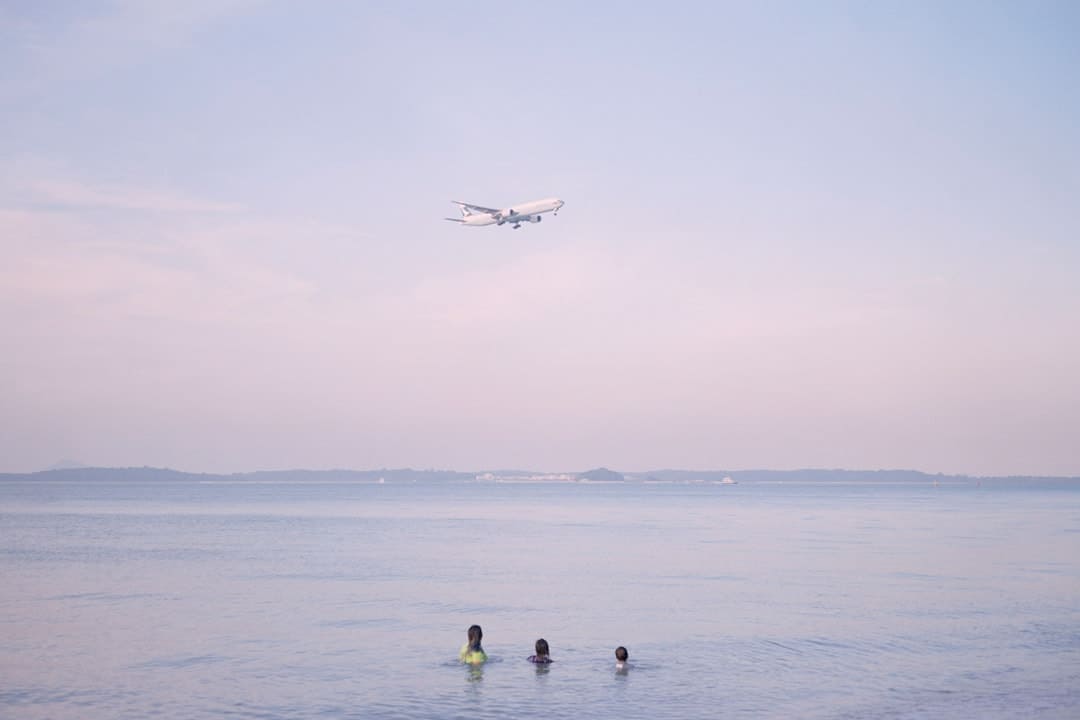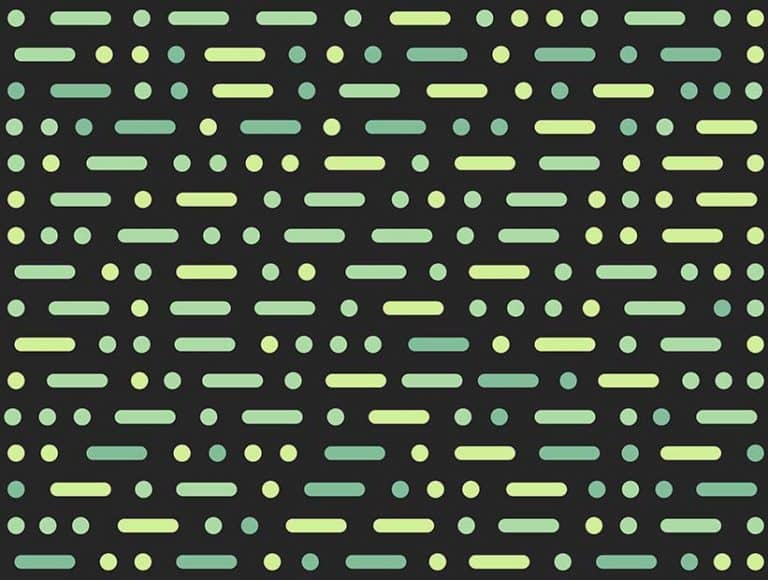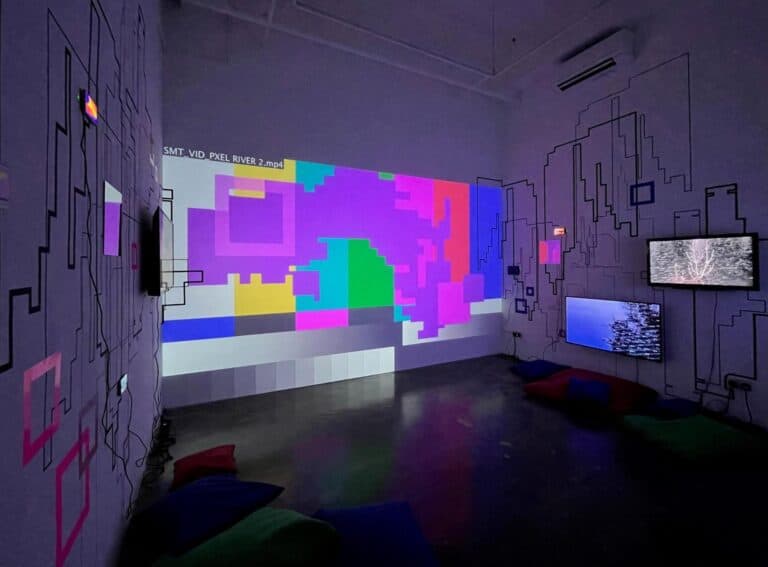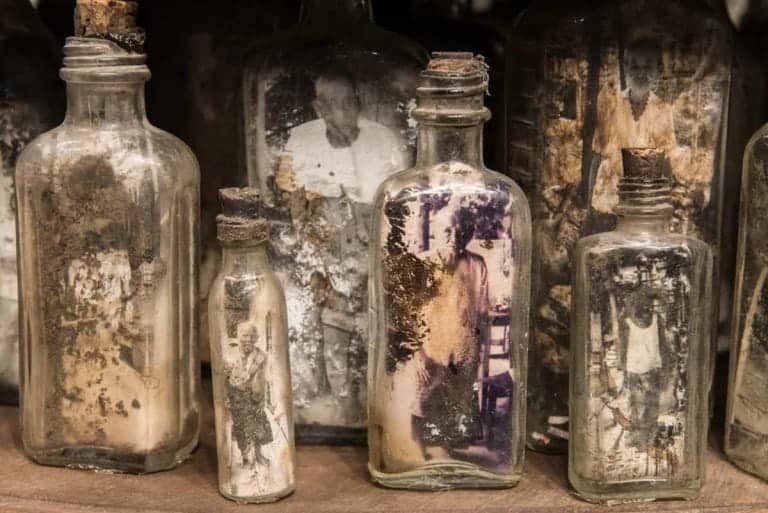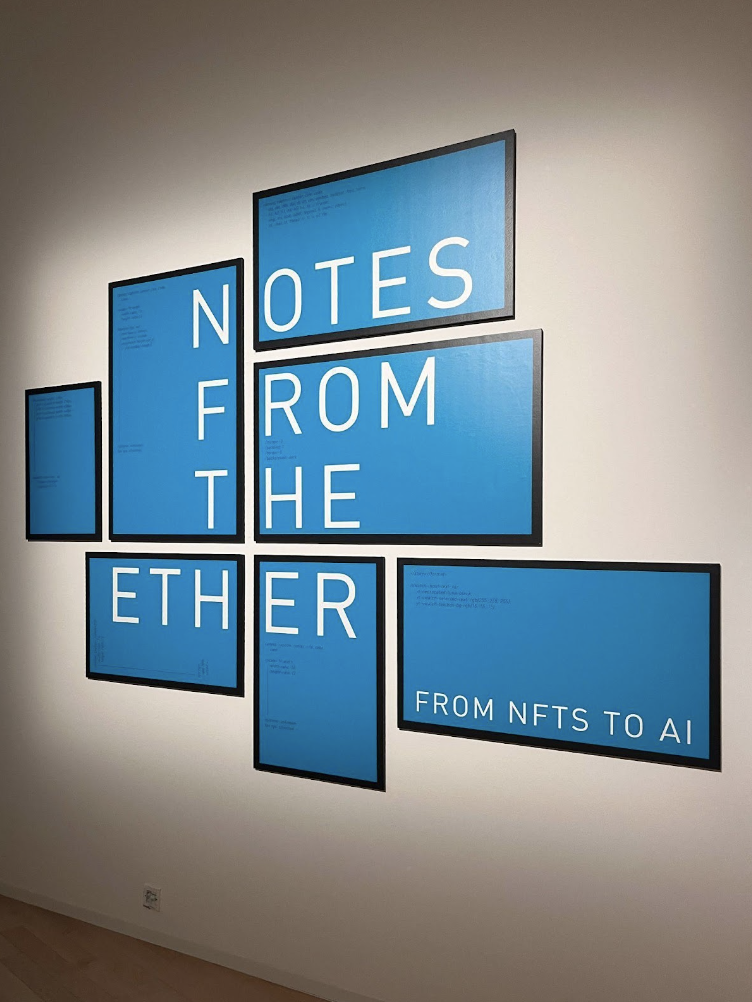It is midday on 31st December 2020, the last day in an extraordinary year of shut borders and international lockdowns, and I am standing square in front of a giant photograph of three doleful humans mired in an ocean, staring up at a plane in flight. Talk about New Year reflections. Beside me, my friend muses in companionable silence. Three minutes later, she turns to me and ponders: “do you think that plane is departing or arriving?”
Coincidentally, that happens to be exactly the theme of this year’s Singapore International Photography Festival, presented as “a sojourn to examine and trace our sense of belonging and identities amid current uncertainties”. As part of SIPF, Margins: drawing pictures of home at the ArtScience Museum presents the works of 15 contemporary photography artists reflecting on issues close to home and what Singapore means to them.
Stepping into the gallery, one immediately encounters Woong Soak Teng’s Ways to Tie Trees, a collection of close-ups of staked trees, which somehow manages to be simultaneously titillating and macabre. A tree is hung by a noose in one frame and restrained in another by a contraption of what appears to be black leather (unlikely), while two frames away a tree is elegantly tied in shibari-esque fashion. Here, Woong presents tree-staking as a reflection of “our innate human instinct to control, ever-present yet unnoticed”, as we uproot and manipulate our greenery to fit our urban planning visions.
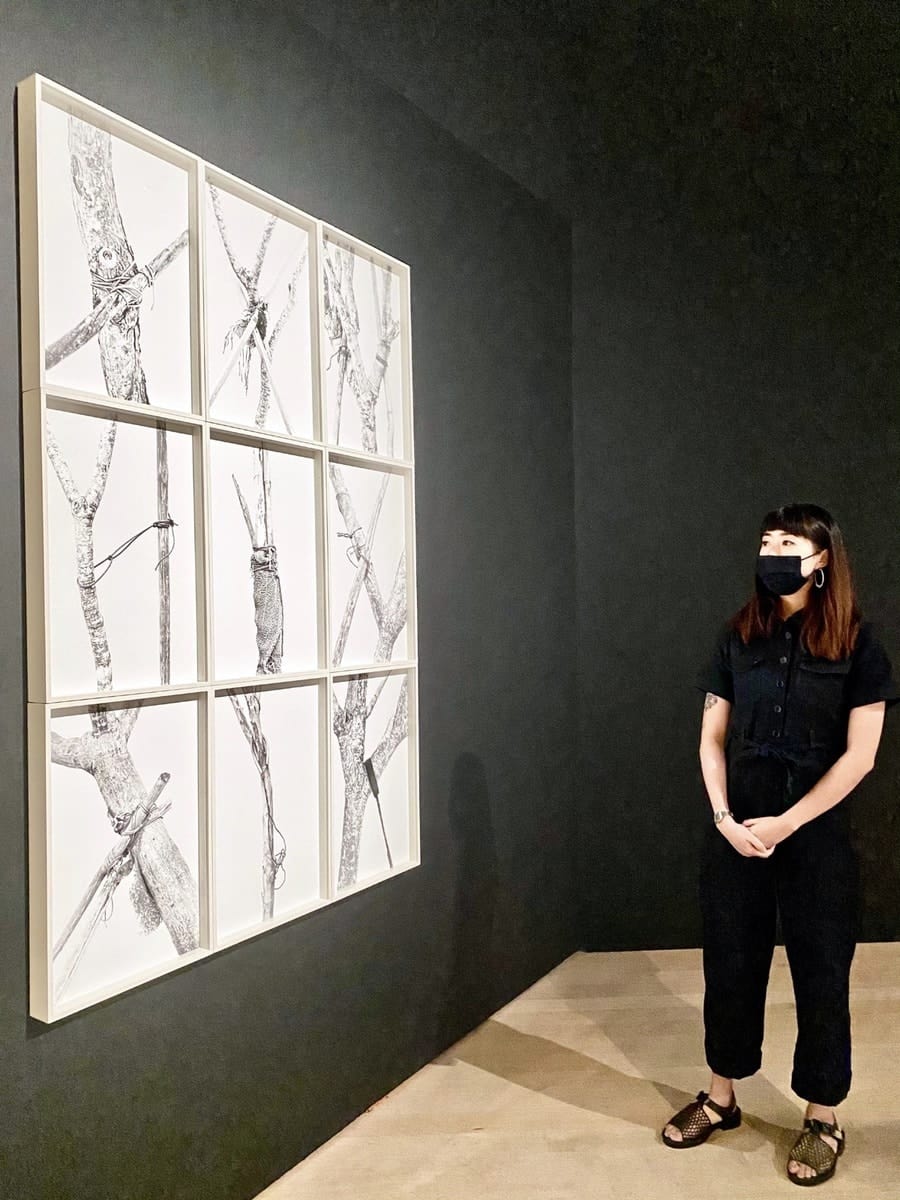
Nearby in Marvin Tang’s Stateland, “guerilla gardens”, or secret garden plots that have been illegally created in Singapore’s state-owned forests, present almost like little oases. Lush tropical greenery and tell-tale signs of human presence (a shack here, a vacant chair there) coexist with a refreshing unkemptness so rarely seen in our manicured cityscapes. Emerging out of the darkness, some juxtaposed against the barest glimpse of a concrete highway, each scene thrums with disquiet – one that is, I am sure, born out of my ingrained fear of being caught breaking the rules (so Singaporean, I know).
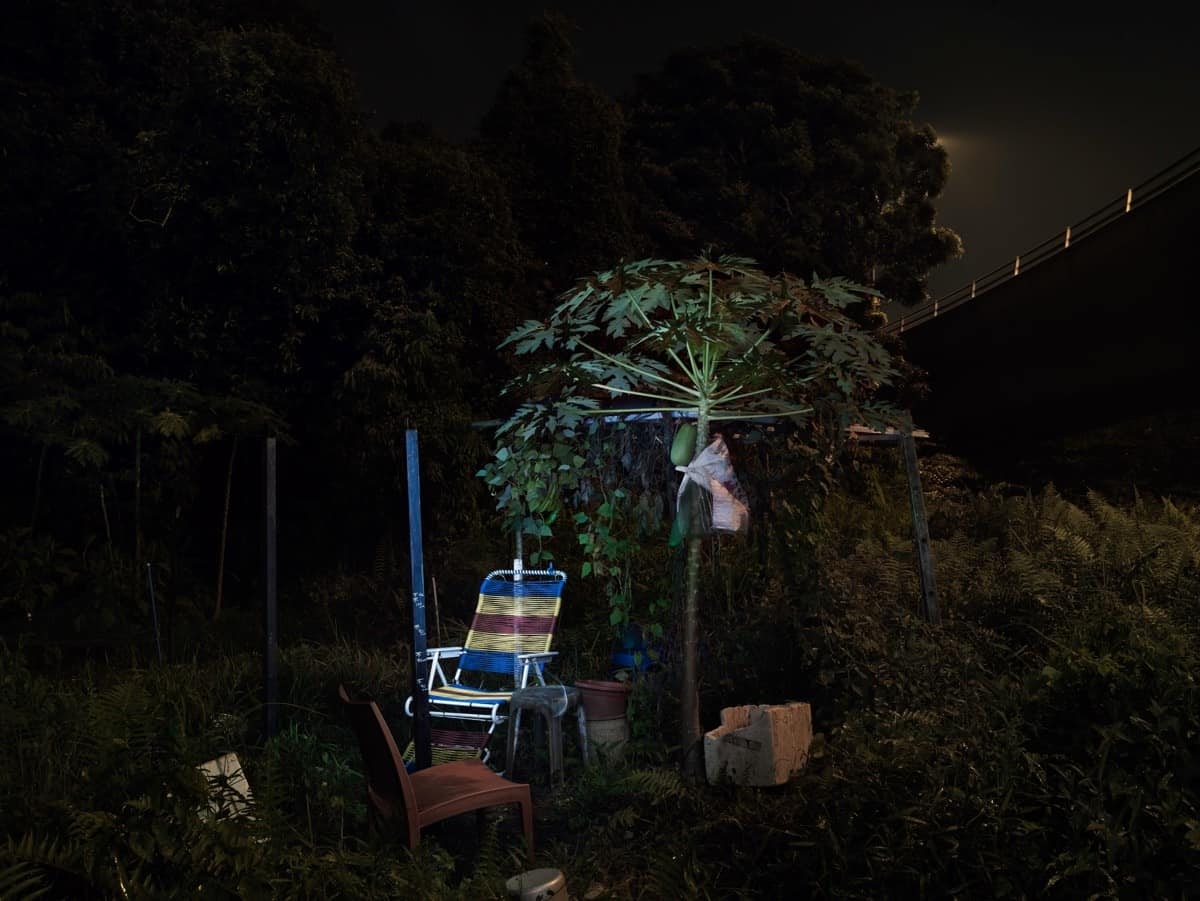
Regardless of your views on garden-city manicuring (and I have previously proclaimed my love for our roadside trees, manicured or not), both works invite us to reflect upon what has been put at stake (and literally, staked) in our pursuit of becoming a City in Nature. Incidentally, I found it tickling that this exhibition section, titled “Gardening the City” and containing Woong’s and Tang’s works, ties its artworks together through an elaboration of the “Garden City” vision and the 1975 Parks and Trees Act, while skirting any reference to state control. Vanilla or guerrilla curating, one wonders?
Some way down the exhibition, but fitting right in with Woong’s and Tang’s works in subject matter, is Ang Song Nian’s Hanging Heavy On My Eyes. In a sprawling arrangement covering three walls, Ang puts together a monthly calendar of gradated grey prints which correspond to Singapore’s Pollutant Standard Index, or PSI (the dreaded measure that haunts us yearly during haze season, like the Hungry Ghost Festival with which it coincides). As the wall text explains, Ang “seeks to mimic a sense of unease and reduced visibility brought by the haze and human attempts in manipulating the environment in accord with their short-sighted agendas”. To be sure, if there’s one thing 2020 has taught us, it is that it’s all fun and neatly-arranged-squares-on-white-walls till nature rears its head and all notions of human omnipotence are out the window.
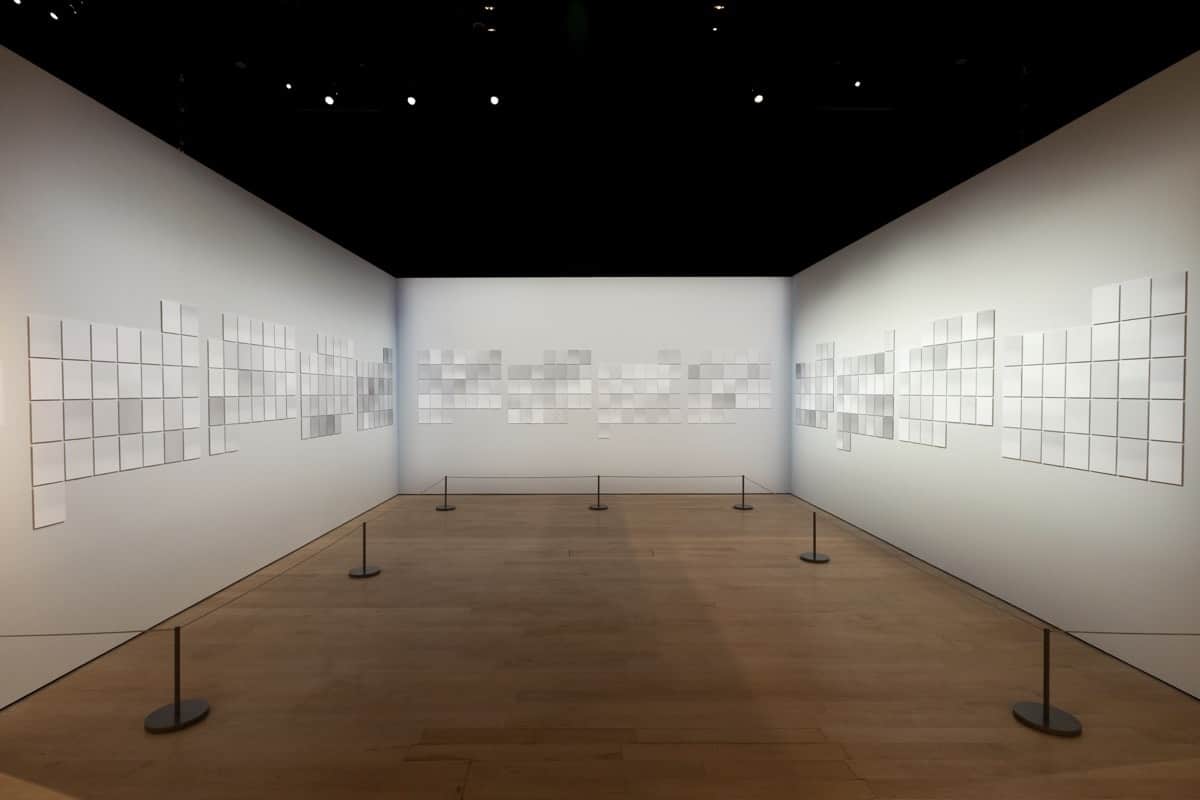
Over in the next exhibition section, the works of Charmaine Poh, Zakaria Zainal and Sim Chi Yin document three migrant communities – labourers who spend much of their lives displaced from their homelands to carve out a living here. Poh’s photographs provide an intimate look into the twilight years of a few remaining Ma Jies, a wave of Chinese female migrants who served as domestic servants in 1930s to 1960s Singapore. Resonating similarly are the subjects of Sim’s documentation, migrant Indonesian women whose portraits of family life are foregrounded by a sense of impending departure.
In COVID-19 times, with xenophobic sentiments at a high and our migrant worker communities facing unprecedented restrictions and isolation, these pictures hold up an uneasy mirror to us. We are tasked to reflect upon the separation and sacrifices of these strangers, that go into maintaining our standards of living. Zainal’s images of former Gurkhas bring some welcome grace to the table as the retired soldiers recount their fond memories in Singapore from decades past. If anything, one hopes for similar moments of joy for all our migrant friends during their transient time here.

And what of us, local urbanites? Spared not from loneliness it appears, from Nguan’s Singapore. The tender pink hues of his photographic works belie the yearning and isolation that palpably emanate from his portraits of life in Singapore’s housing estates. In his photographs, a line of youths sit listlessly, each with the same red Big Gulp cup, and an elderly woman labours on a bicycle stacked with cardboard. Time seems distended to the point of meaninglessness. As Nguan shares, “each picture is meant to seem simultaneously naïve and disquieting, so as to reflect the predicament of an adolescent nation torn between her future and the past.”
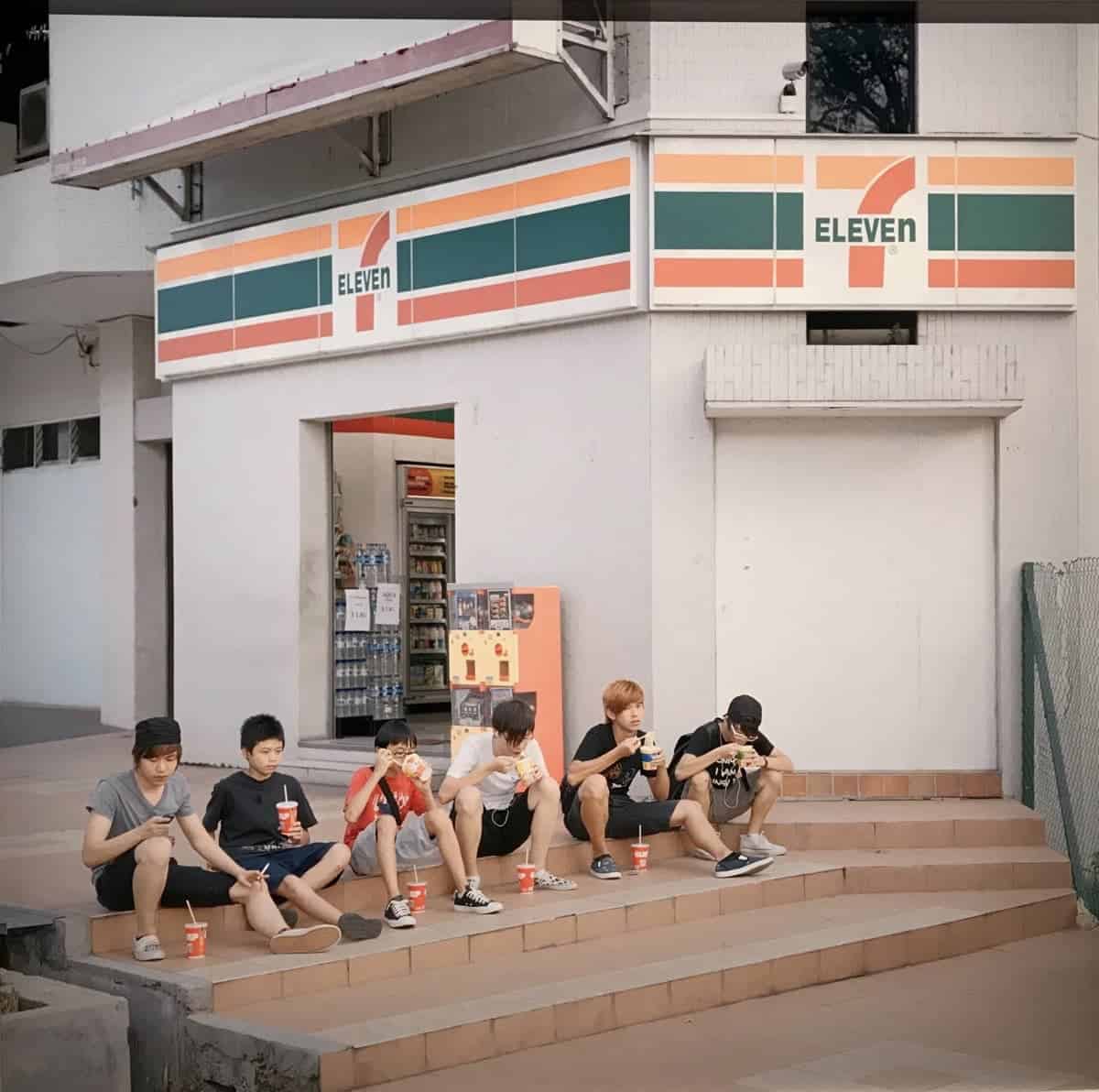
Serving as a cheeky counterpoint to Nguan’s work is Aikbeng Chia’s similarly titled SingKarPor (“Singapore” in colloquial Hokkien). Mischievously-composed candid snapshots of Singaporeans flash at rapid speed on three adjacent digital displays – for example, an elderly couple seated at a bus stop in the dark, a white-collared worker catching forty winks on a bench, and a crouched figure provocatively positioned between the legs of a Jeff Koons sculpture. Viewed in tandem, the solitude of city life yields to playful absurdity and a familiar sense of the solace we find in crowds. (Lonely but, at least, lonely together – right?)
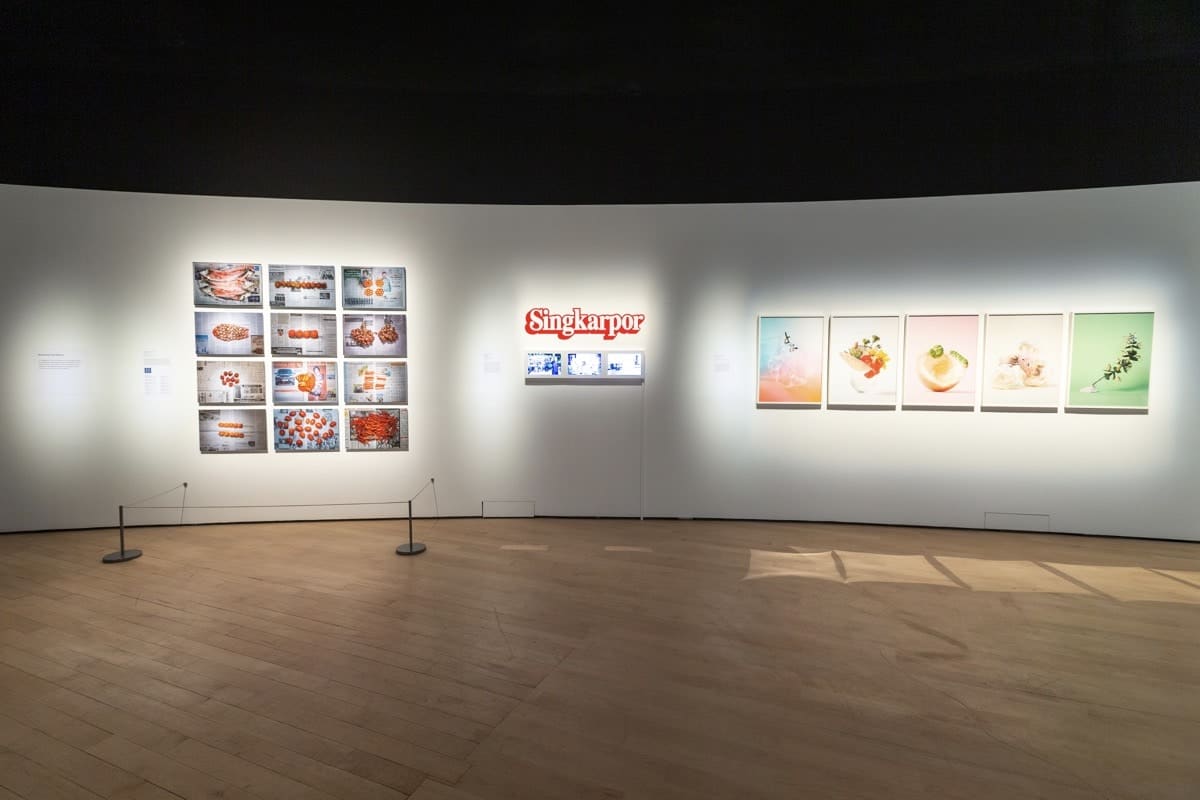
Walking through the exhibit, Wilfred Lim’s State of Solitary stood out to me with its meticulously composed fine-art aesthetic. Lim created the series during the circuit breaker season, with food scraps and wildflowers found during his sanctioned one-hour exercise periods. While its whimsical assemblages and bright popping colours were a refreshing break, I did struggle somewhat to piece it together with the rest of the show. I’d say the same for Chow and Lin’s The Poverty Line. For this work, the artists travelled to 36 countries and photographed the paltry amounts of local food which could be purchased with money corresponding to the local poverty definitions. It is the sole work which spoke to Singapore as a part of the larger whole that is our global community. One wishes perhaps for more elucidation, but nonetheless, can be satisfied to see these works as standalone morsels of food-for-thought.
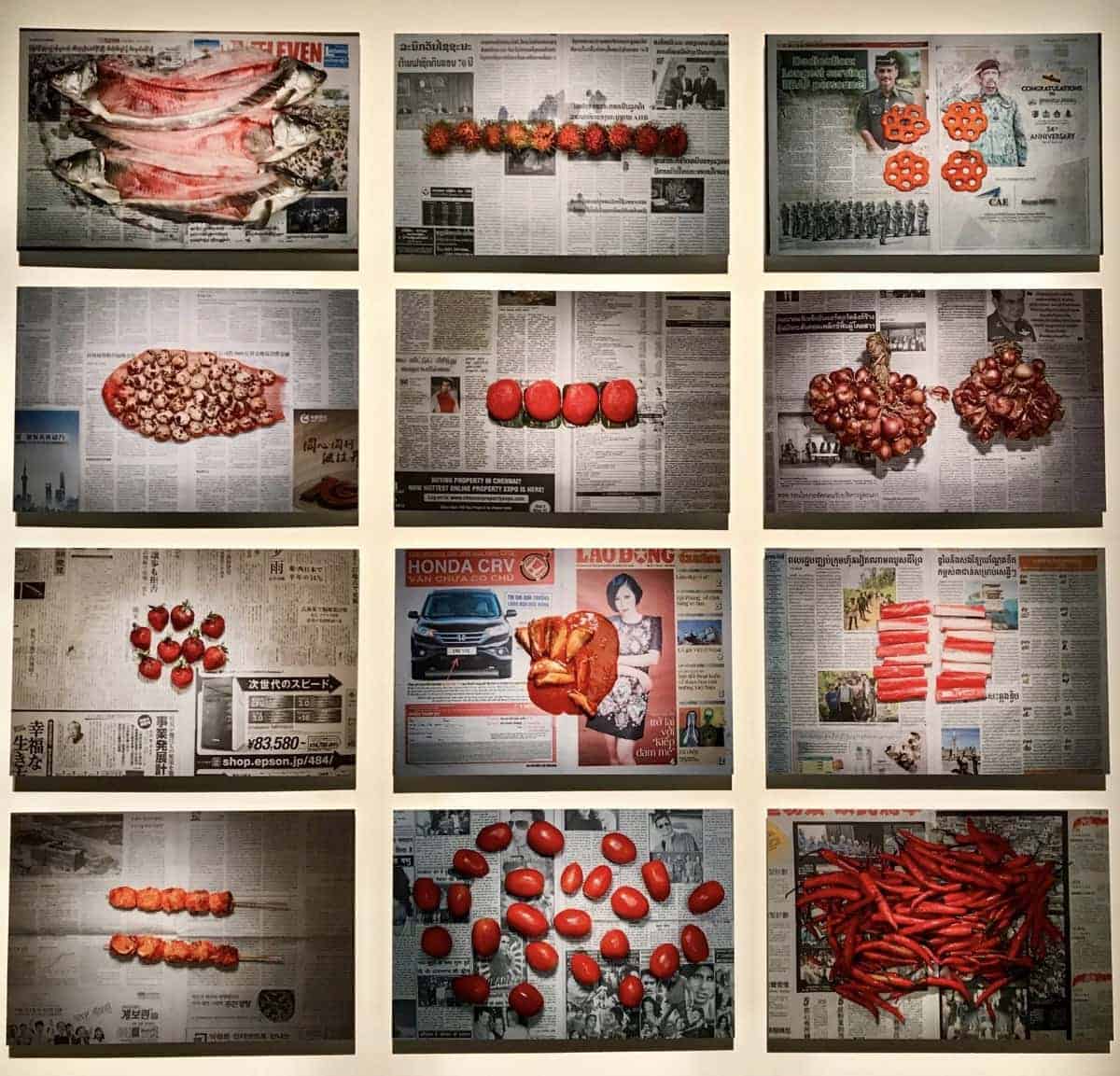
Finally, no exhibition on the theme of home is complete without a healthy dose of nostalgia. Alecia Neo’s Home Visits is an intimate documentation of the homes of residents in the Queenstown neighbourhood. Darren Soh’s SS24 The Last Train captures the ghostly apparitions of the now-terminated passenger train service between Tanjong Pagar and Kuala Lumpur in its final nightly commutes. We are, as always, quick to cherish the places and things we are on the verge of losing.

At the end of the exhibition, the corridor loops and I arrive back to the very first work by Nguan – a poignant reminder that departure and arrival are, after all, two sides of the same coin. And what of those who stand still – the ones for whom this is home, and those who are left behind? The questions which Margins seeks to confront are made ever more relevant in the wake of 2020, as we grapple to reconcile its lessons and chart our way forward as a nation. After all, when the last plane leaves and we are left with just ourselves, do we like what we see?
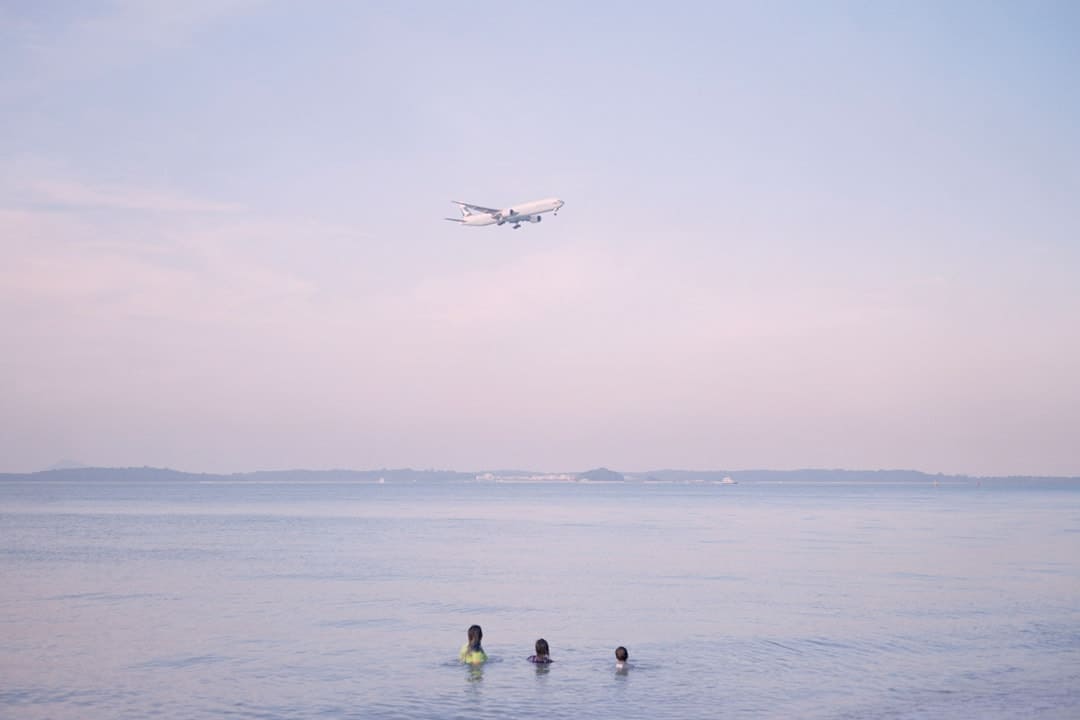
________________________________
Margins: drawing pictures of home is part of the 7th edition of the Singapore International Photography Festival. The exhibition is on at the ArtScience Museum till 29 February 2021.
